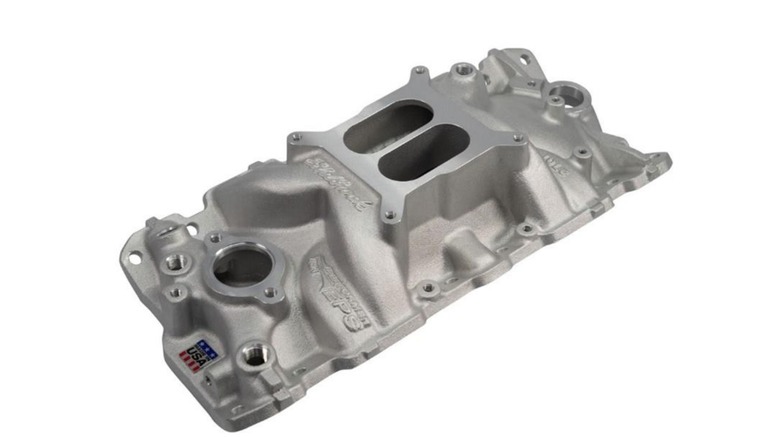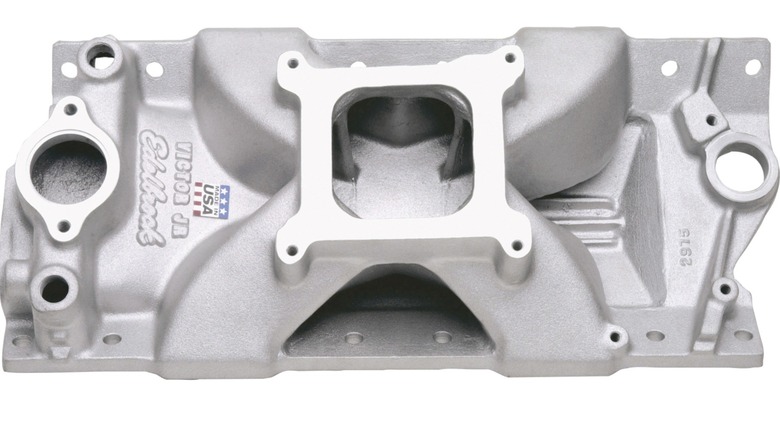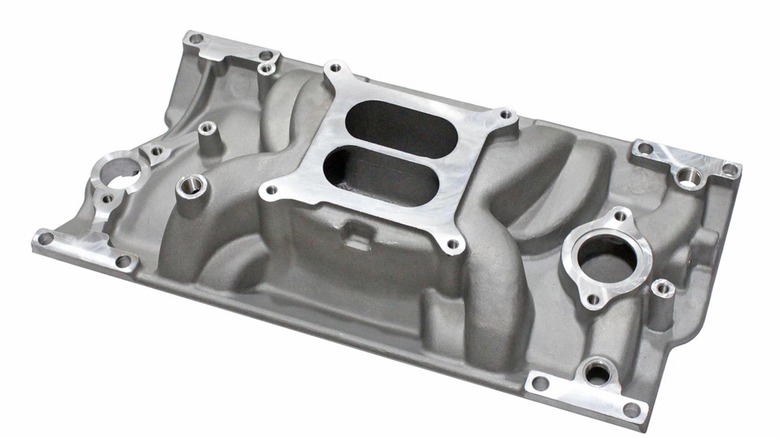Single-Plane Vs. Dual-Plane Intake Manifolds: Which Is Better For Your Classic Car?
Intake manifolds may not be the most well-known automotive components, but that doesn't take away from their importance. These devices are responsible for sending a precise mixture of fuel and air to your engine's cylinders. That fuel/air mixture then gets ignited by the spark plugs, resulting in the small, contained explosions that rotate the crankshaft and power your motor.
That's a pretty surface-level explanation of intake manifolds. In reality, the way these devices work is much more complex, and the exact method used depends on the type of intake manifold your engine has. That's right. There are various different types of intake manifolds, including single-plane and dual-plane. Single-plane and dual-plane intake manifolds are found primarily on older vehicles with carbureted motors, but you can also find them on engines that have been retrofitted with electronic fuel injection conversion kits — one of the coolest upgrades for classic cars. While both dual-plane and single-plane intake manifolds are classified as wet-flow intake manifolds, meaning that air and fuel are mixed together before traveling through the manifold's runners, there are several differences between the two.
What exactly are those differences, and is one better than the other? The answer is multi-faceted and depends on a few factors, including what you plan to do with your vehicle and the type of performance you're hoping to achieve. The biggest difference between single-plane and dual-plane intake manifolds is the way the fuel/air mixture reaches the cylinders and the way that affects the engine's performance. But let's go ahead and dive in to explore these two types of intake manifolds in greater detail. We'll cover the differences between the two and help you understand which is better for your classic car.
Key differences between single- and dual-plane intake manifolds
As mentioned, the primary difference between single-plane and dual-plane intake manifolds is the way in which these devices route the air/fuel mixture to the engine's cylinders. As the name implies, single-plane intake manifolds have one plenum or opening through which air and fuel can flow. That single opening feeds air and fuel to each of the engine's cylinders. In contrast, dual-plane intake manifolds have two smaller plenums, and each opening feeds half of the motor's cylinders.
The larger single plenum found on single-plane intake manifolds allows for maximum airflow, which, in turn, enables drivers to use a smaller carburetor, resulting in more top-end power. Single-plane intake manifolds also usually have shorter runners, or pathways through which air and fuel travels to reach the cylinders, which further contributes to maximum airflow. Dual-plane intake manifolds, on the other hand, use longer runners. Longer runners are necessary for dual-plane intake manifolds because each plenum serves a different bank or set of engine cylinders, and the runners must curve and twist around one another to make this possible. Those longer runners contribute to more robust low-end power at the expense of high-end performance.
The final difference between single-plane intake manifolds and dual-plane intake manifolds is their traditional applications. While dual-plane manifolds are the most common type of intake manifolds found on stock vehicles, single-plane devices are frequently found on modified performance cars.
Which one is best for your classic car?
If you're trying to decide between a single-plane intake manifold and a dual-plane intake manifold, you most likely own a classic car or are working on a project build with an old-school carburetor engine. That's because, as mentioned, these types of intake manifolds are used almost exclusively on carburetor motors.
When it comes down to choosing between the two, the most important thing to consider is what you plan to do with your car. If you're planning a stock build or restoration for car shows or to simply cruise around on the weekends, a dual-plane intake manifold is probably the best choice. That's because these types of intake manifolds provide the best all-around performance for normal vehicles (i.e., cars that you don't plan to race).
Dual-plane intake manifolds provide solid power and torque at low speeds, but fall off performance-wise at around 5,500 RPM. For racing applications, high RPM performance is essential, which is why a single-plane intake manifold is the better option for performance cars. If you're building a race car for the track or drag strip, a single-plane intake manifold is most likely the best choice. These manifolds allow for superior top-end power and higher RPM, and drivers installing a single-plane intake manifold can usually expect to add at least 500 to 1,000 RPM to the top of their engine's RPM range.


